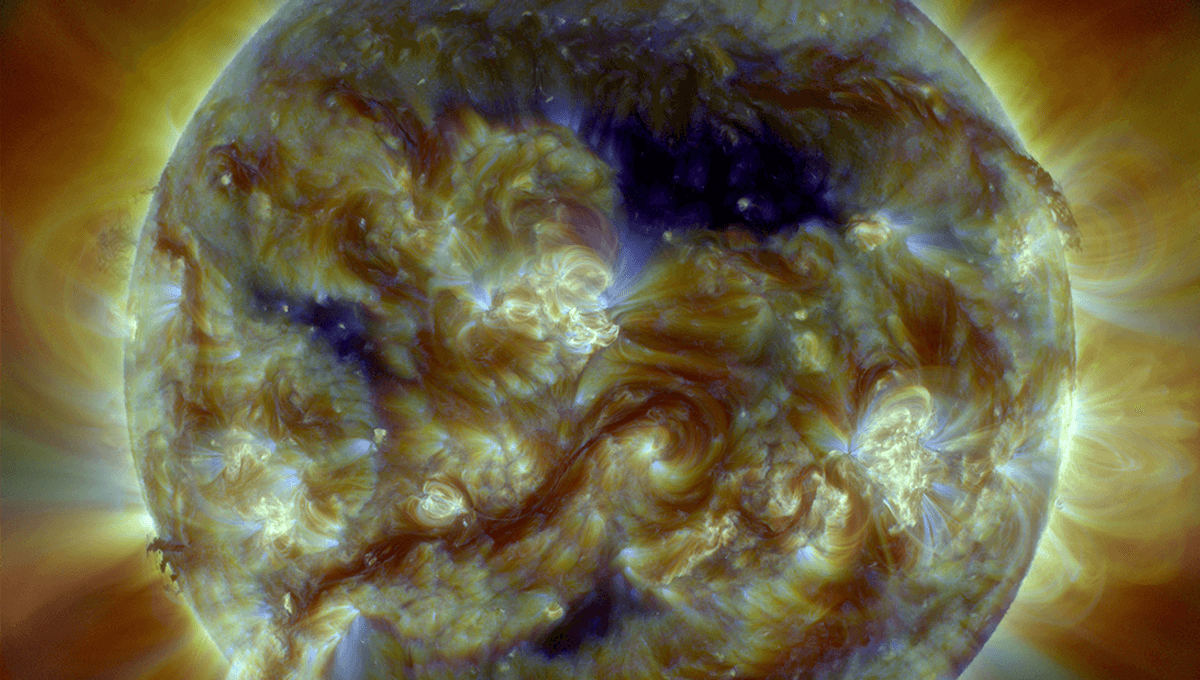
NASA has announced that the Sun has reached its solar maximum period in the solar cycle, with more geomagnetic storms and aurora expected in the coming months.
Solar activity increases and decreases over the 11-year solar cycle – also known as the Schwabe cycle, named after the astronomer who first noticed it. From 1826 to 1843, German amateur astronomer Heinrich Schwabe observed the Sun, discovering that it rotates on its axis once every 27 days. He realized that over the course of 11 years, the Sun goes from quiet periods, where no sunspots can be seen, to the maximum phase, where 20 or more groups of sunspots can be seen.
“Sunspots are areas where the magnetic field is about 2,500 times stronger than Earth’s, much higher than anywhere else on the Sun,” the National Weather Service explains. “Because of the strong magnetic field, the magnetic pressure increases while the surrounding atmospheric pressure decreases. This in turn lowers the temperature relative to its surroundings because the concentrated magnetic field inhibits the flow of hot, new gas from the Sun’s interior to the surface. “
Astronomers track these sunspots, and more recently “terminator events“, in order to determine where we are in the solar cycle.
“During solar maximum, the number of sunspots, and therefore, the amount of solar activity, increases,” Jamie Favors, director, Space Weather Program at NASA Headquarters in Washington, said in a statement. “This increase in activity provides an exciting opportunity to learn about our closest star — but also causes real effects at Earth and throughout our solar system.”
These effects include geomagnetic storms, and aurora when a coronal mass ejection interacts with the Earth’s magnetic fields. Both of these have been on the rise in recent months as we headed towards the solar maximum.
It was previously predicted by NASA that the solar maximum would not occur until 2025 – but in a teleconference on Tuesday, representatives from NASA, the National Oceanic and Atmospheric Administration (NOAA), and the international Solar Cycle Prediction Panel announced that we have entered the solar maximum period and that we could be in it “for the next year”.
“This announcement doesn’t mean that this is the peak of solar activity we’ll see this solar cycle,” Elsayed Talaat, director of space weather operations at NOAA, explained. “While the Sun has reached the solar maximum period, the month that solar activity peaks on the Sun will not be identified for months or years.”
In this maximum period, NOAA expects there will be more geomagnetic storms, solar flares, and aurora to gawp at in the coming months.
The magnetic field of the Sun flips during the cycle, like a much more fluid version of the Earth’s. The cycle can be as short as eight years, or as long as 14. During the solar minimum, when sunspot activity is at its lowest, one pole is positively charged and the other negatively.
“The solar magnetic structure changes over the solar cycle. It has a dipole structure during solar minimum, where the open flux extends mainly from the polar regions into the interplanetary space,” one paper on the topic explains. “During maximum, a complex structure is formed with low-latitude active regions and weakened polar fields, resulting in spread open field regions.”
Though not completely unusual, this particular solar cycle has been a little stronger than expected.
“Solar Cycle 25 sunspot activity has slightly exceeded expectations,” said Lisa Upton, co-chair of the Solar Cycle Prediction Panel and lead scientist at Southwest Research Institute in San Antonio, Texas. “However, despite seeing a few large storms, they aren’t larger than what we might expect during the maximum phase of the cycle.”
With the solar maximum stretching into next year, NASA and others will have plenty of opportunities to study it further, as well as (fingers crossed) some more spectacular aurora.
Source Link: Expect Geomagnetic Storms And Aurora: The Sun Has Reached Solar Maximum, NASA Announces